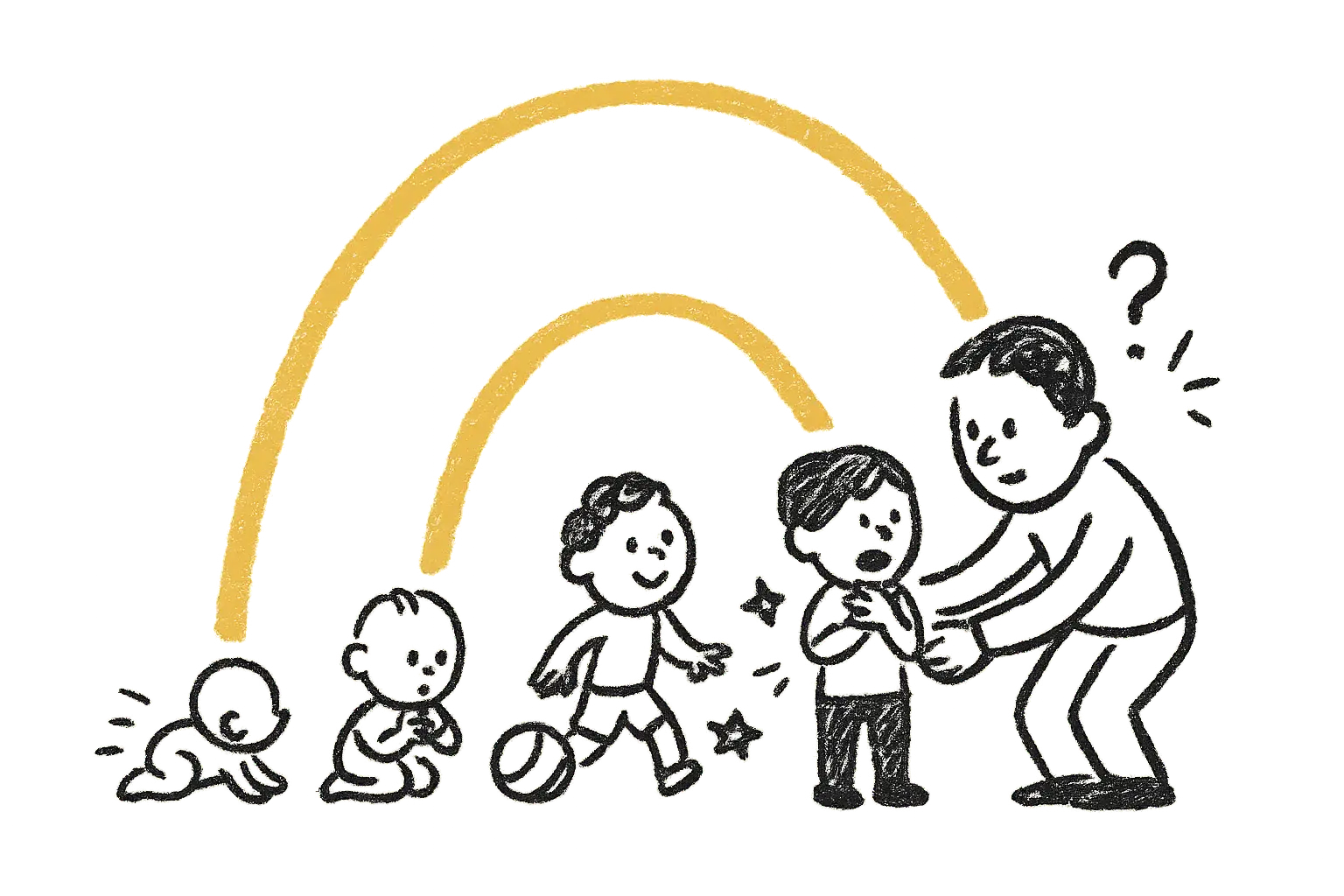The Myth of a Single “Most Important” Age Window

For a long time, I thought the debate was whether the most important years of a child’s life were 1–5 or 1–7. I used to say seven without hesitation. It sounded neat: “The first seven years shape the rest of your life.” It felt profound.
But the more I read and the more I watched kids grow up around me, the less tidy that statement became. Science, as it turns out, doesn’t give us a simple answer. What it does show is that childhood unfolds in overlapping waves. Each stage brings its own kind of importance.
So instead of asking which years are the most important, maybe the better question is: what kind of importance happens when?
The Early Explosion: Birth to 5
By the time a child blows out their fifth birthday candle, their brain is already about 90% of its adult size. That fact alone is jaw-dropping.
Think about what happens in those years:
- A baby goes from babbling sounds to stringing full sentences.
- They learn to crawl, then run, then climb the jungle gym with terrifying confidence.
- Their attachment to caregivers lays the blueprint for how safe and loved they’ll feel in the world.
Neuroscientists describe the brain at this age like a construction site at full throttle. Billions of new neural connections form every second. Experiences—positive or negative—literally sculpt the brain’s architecture.
That’s why birth to five gets so much attention from policy makers. Programs like Head Start, early childhood education funding, and developmental screenings aren’t just “nice to have.” They’re society’s attempt to meet kids where their brains are the most malleable.
The Formative Bridge: 6–7
These years aren’t as explosive as toddlerhood, but they’re a pivot point.
- Cognitively, kids move from magical thinking into more logical reasoning.
- Neuroscience shows that functional networks tied to attention and emotional regulation are still tuning themselves.
- Educational traditions like Montessori and Waldorf see seven as a threshold when children are ready for a new phase of learning.
It’s the bridge—carrying a child from raw plasticity into the steadier rhythm of middle childhood.
The Steady Builders: 7–12
Middle childhood doesn’t get the headlines, but it’s the construction phase.
- Brain fine-tuning: Synaptic pruning trims unused connections, making thinking more efficient. Executive functions like planning and self-control strengthen.
- Identity and competence: Kids want to feel capable. Success builds lasting confidence; repeated failure can plant self-doubt.
- Social growth: Friendships deepen, empathy expands, peer comparisons shape self-esteem.
- Habits solidify: Study habits, resilience, even sleep routines start to stick.
If 0–5 is the operating system and 6–7 is the bridge, then 7–12 is when kids start downloading the apps and learning how to use them.
The Second Surge: Adolescence to Young Adulthood
Adolescence is a second explosion of brain development.
- The prefrontal cortex, which governs planning, decision making, and impulse control, matures into the mid-20s.
- Puberty triggers another round of synaptic pruning, reshaping the brain for adult efficiency.
- Teens experiment with identity, independence, and risk—all of which shape long-term pathways.
It’s messy, but it’s also transformative.
The Missing Piece: Variation, Context, and Resilience
Here’s where the “cutoff age” myth really crumbles:
- Individual variation: Not all kids hit milestones at the same time. Some read at four, others at eight. Brain development has a typical pattern, but there’s plenty of healthy range.
- Epigenetics: Research shows early environments can influence how genes are expressed—turning certain switches “on” or “off.” Stress, nutrition, or nurturing can literally leave a biological imprint, affecting resilience or vulnerability later.
- Socioeconomic factors: Poverty, unstable housing, and lack of access to healthcare or quality schooling can weigh heavily at every stage. But enrichment, stability, and opportunity can buffer those risks.
- Cultural variation: In some cultures, children are expected to take on responsibilities (like caregiving or work) much earlier; in others, childhood is extended with prolonged schooling and play. What counts as “readiness” isn’t universal—it’s shaped by cultural values.
- Trauma and resilience: Adverse childhood experiences (ACEs) can alter brain architecture and stress systems. But resilience research shows that even one stable, supportive adult can profoundly shift outcomes. Interventions like mentoring programs, school-based social-emotional learning, and family therapy are proven ways to build protective factors.
In other words: biology matters, but biology in context is what really tells the story.
Why This Matters
When we treat early childhood as the only important phase, two mistakes creep in:
- Over-fatalism. A rough start doesn’t doom a child. Brains remain plastic, and relationships can reshape the path.
- Under-investment. Ignoring the importance of schools, mentors, and community during the builder years or adolescence misses huge opportunities.
My Takeaway
Instead of asking “Is it 1–5 or 1–7?” I think a better way to frame it is:
- 0–5: The foundation years — raw brain architecture.
- 6–7: The bridge years — refining skills, stepping into logic.
- 7–12: The builder years — consolidating habits, identity, competence.
- Adolescence: The transformation years — identity, self-control, future pathways.
Childhood isn’t about a single cutoff. It’s a continuum—biology, environment, and relationships weaving together.
And honestly? That makes me hopeful. Because it means every stage, every moment, every relationship still has power. There’s always more shaping to be done.
👉 What do you think: does reframing it as a continuum of windows feel more accurate than trying to crown one stage as the most important?
References
- Center on the Developing Child at Harvard University. Brain Development: The Foundation of Health and Learning.
- Lurie Children’s Hospital (2023). Early Childhood Brain Development and Health.
- Gilmore, J.H., et al. (2025). Developmental trajectories of functional brain networks from birth to age 6. Nature Human Behaviour.
- UNC Health (2025). Study Reveals Key Roles in Developmental Milestones of the Brain in Children.
- Verywell Mind (2024). Critical Period in Brain Development: Definition and Importance.
- Edutopia (2023). Why Ages 2–7 Matter So Much for Brain Development.
- Erikson, E.H. Childhood and Society.
- Felitti, V.J., et al. (1998). Relationship of Childhood Abuse and Household Dysfunction to Many of the Leading Causes of Death in Adults: The Adverse Childhood Experiences (ACE) Study. American Journal of Preventive Medicine.
- Masten, A.S. (2018). Resilience Theory and Research on Children and Families: Past, Present, and Promise. Journal of Family Theory & Review.
- Boyce, W.T. & Ellis, B.J. (2022). Biological sensitivity to context: An updated theory of differential susceptibility. Development and Psychopathology.


Member discussion